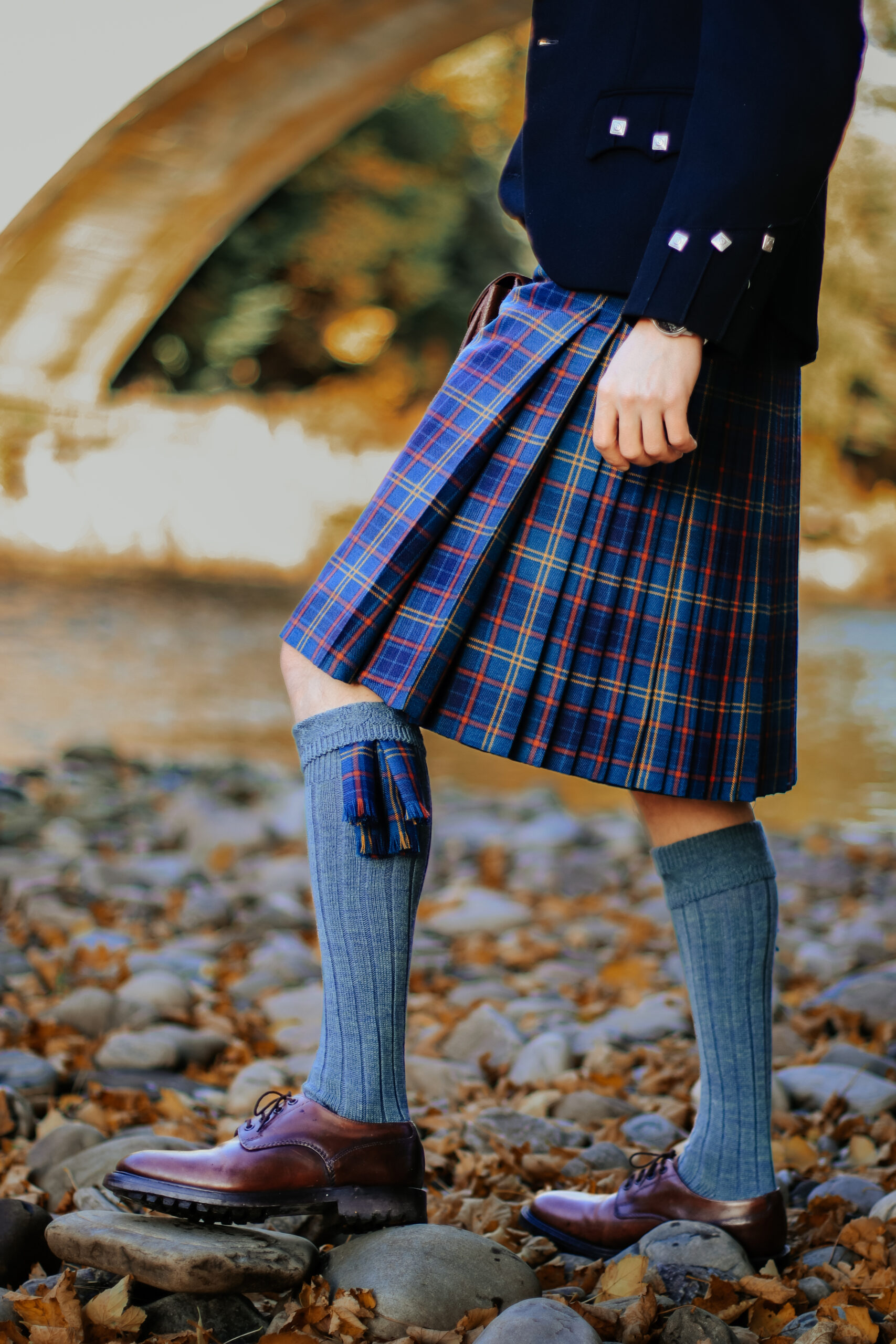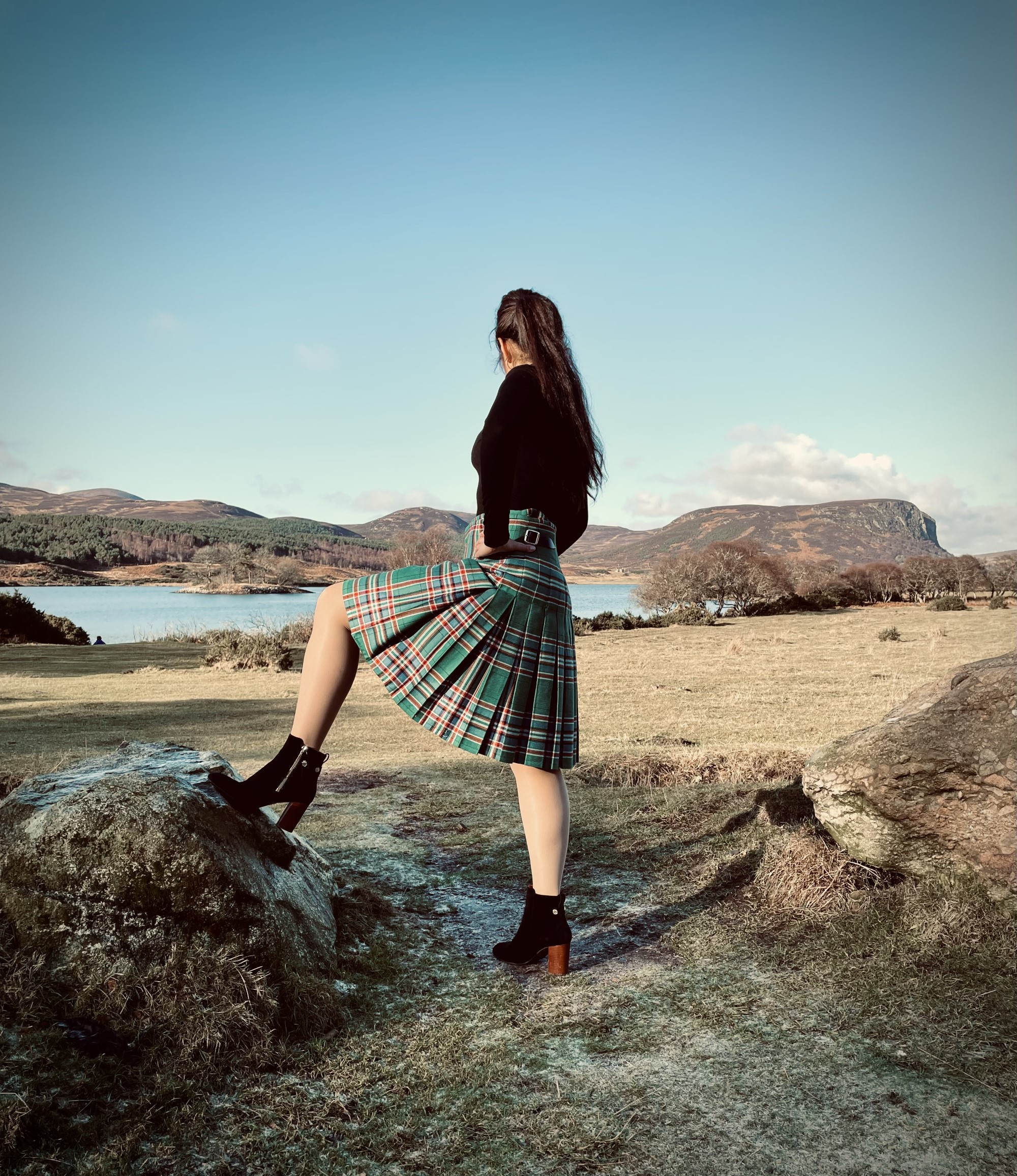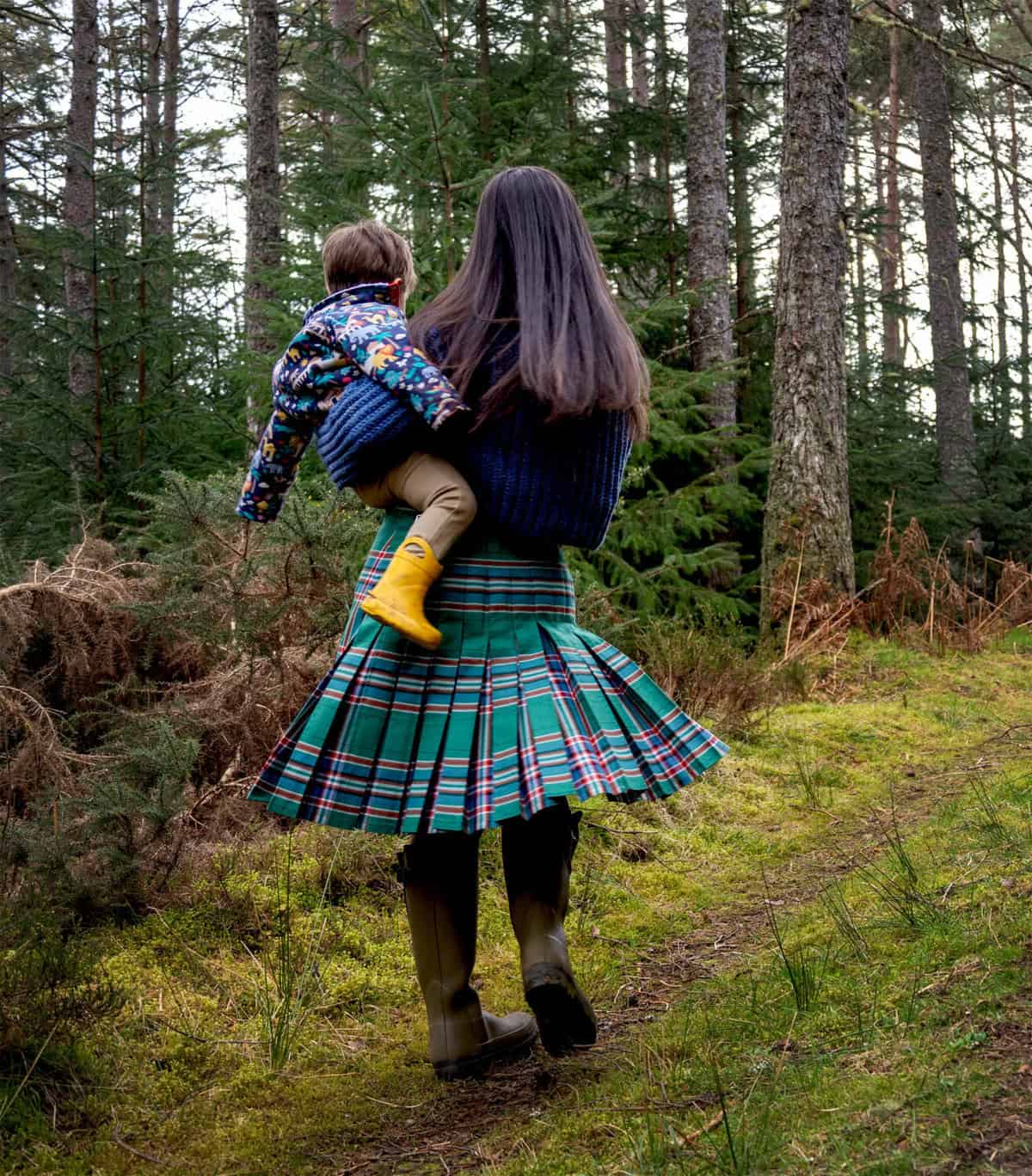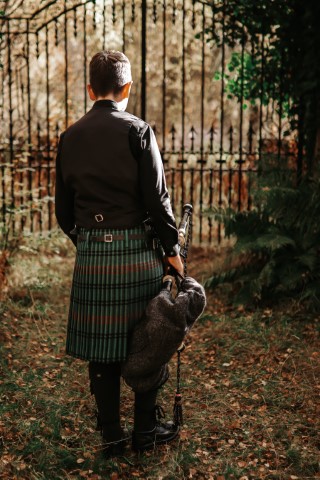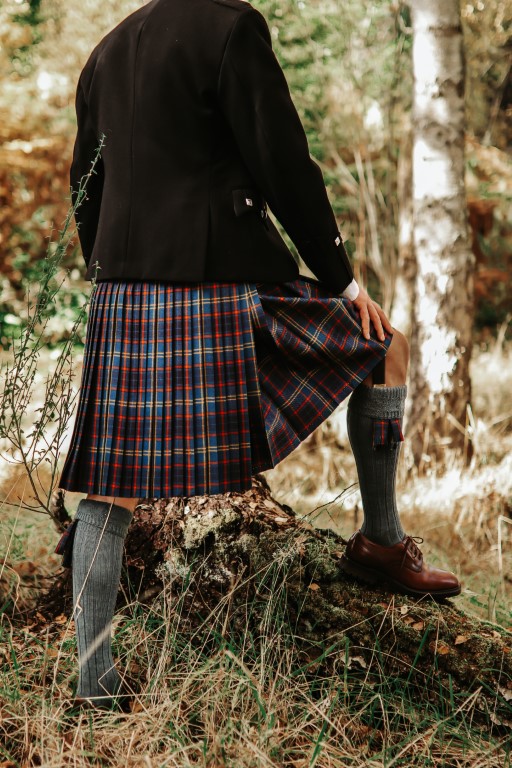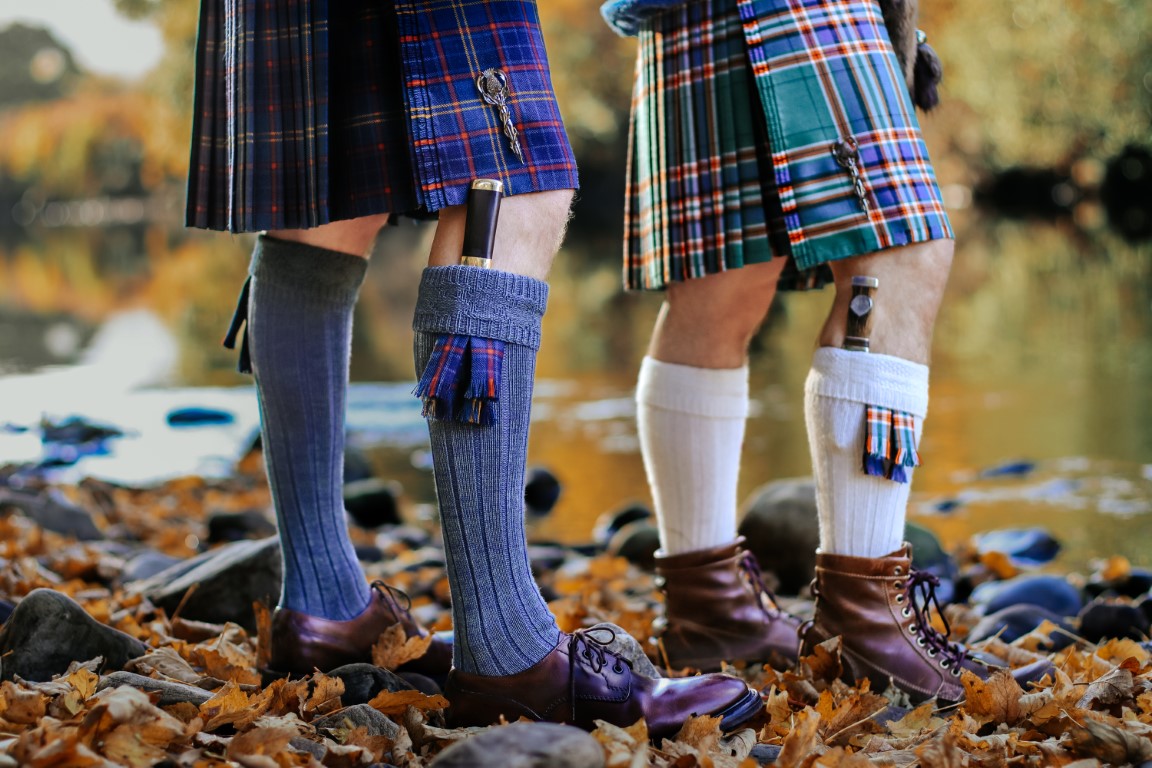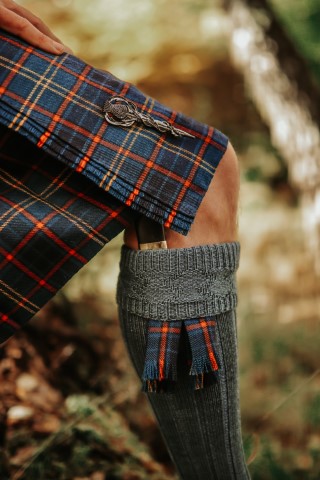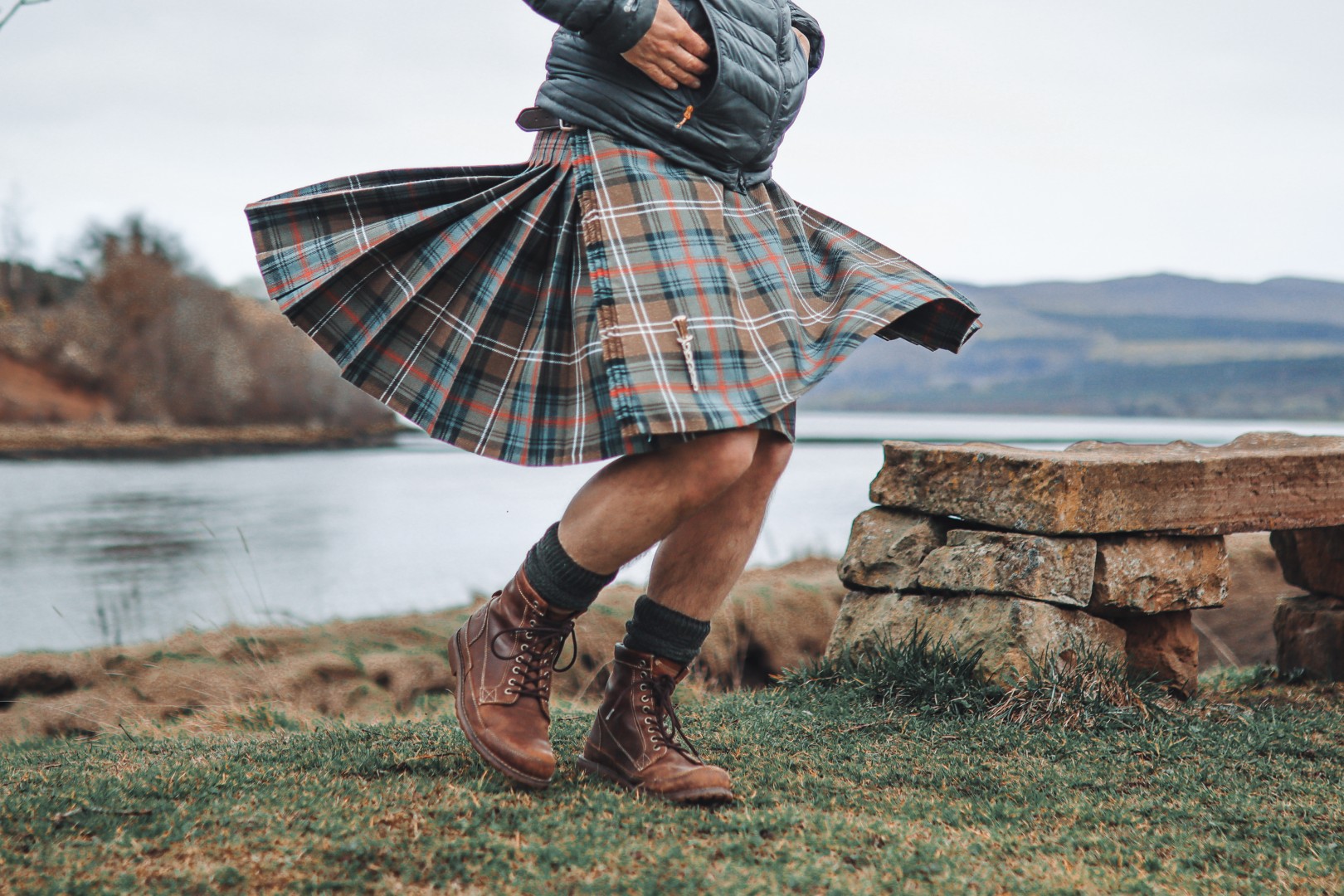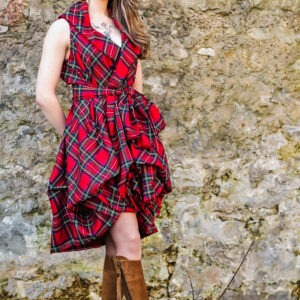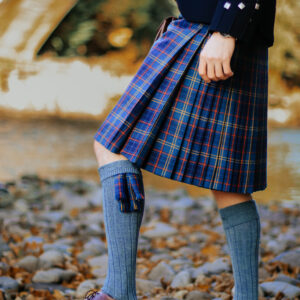Kilt
At Thistle and Cloth, we offer a unique opportunity to create a kilt that is not just a garment but an heirloom, quite literally sewn into your kilt. Whether it’s an old family belt transformed into Kilt Straps or your Grandfather’s shirt sewn up into lining, I can create a lasting tribute to your family’s history and heritage. Please get in touch to discuss your requirements.
The Kilt Price
Please note that the price does not include the material or postage.
£595.00
The Kilt
The kilt, a historical garment, began its fascinating evolution in the 16th century. From its humble beginnings as the ‘little wrap’ (feileadh beag), it transformed into the more substantial ‘big wrap’ (feileadh mòr). It shed its simple belted plaid form to become an intricately constructed piece of attire. Traditionally, kilts use around 8 meters of cloth; we wrap this around the body, creating distinctive pleats at the rear.
We carefully tailor each kilt for a precise fit. We use waist and seat measurements to calculate the length and width of the pleats, both at the top and the seat of the pleated section. Measurements from 5cm above the belly button to the knee, along with height, help us determine the kilt’s overall length.
Traditional craftsmanship drives kiltmaking, and we employ numerous hand-stitching techniques. We use fell-stitched pleats, intricate knot stitches on the bar tacks and vent openings, and classic herringbone stitches on the canvas, to name a few! Kilts also feature three leather strap fastenings as standard and three fringed edges. We can add hanger tapes and belt loops if you require them.
Pleats
We use two main types of pleats in a kilt. The most common is the knife edge, which you can see in pictures of the Macfarlane kilts worn by the men.
Box pleats appear on the lady’s kilt in the pictures. From these, you choose the style of the pleats.
Pleating to the sett ensures the tartan’s pattern runs seamlessly through the kilt over the garment’s back (as shown in pictures of the Macfarlane kilt worn by the adult man); this demands intricate mathematical calculations, a testament to the precision in kiltmaking!
Pleating to the stripe originated with Military kilts; here, every pleat is identical and features a stripe running down the middle. This gives the garment a bold and uniform look and allows for many different variations depending on which stripe you choose to feature. You can see an example of a kilt pleated to the stripe on the young boy wearing a Macfarlane kilt.
The other pleating style option is banding. Here, we conceal all the vertical lines within the pleat, providing a different look from the other options. Images of the Macfarlane kilt worn by the female show banding.
Contact us for more information
The Material
100% wool, weight depends on the Tartan chosen, but traditionally medium-heavyweight.
